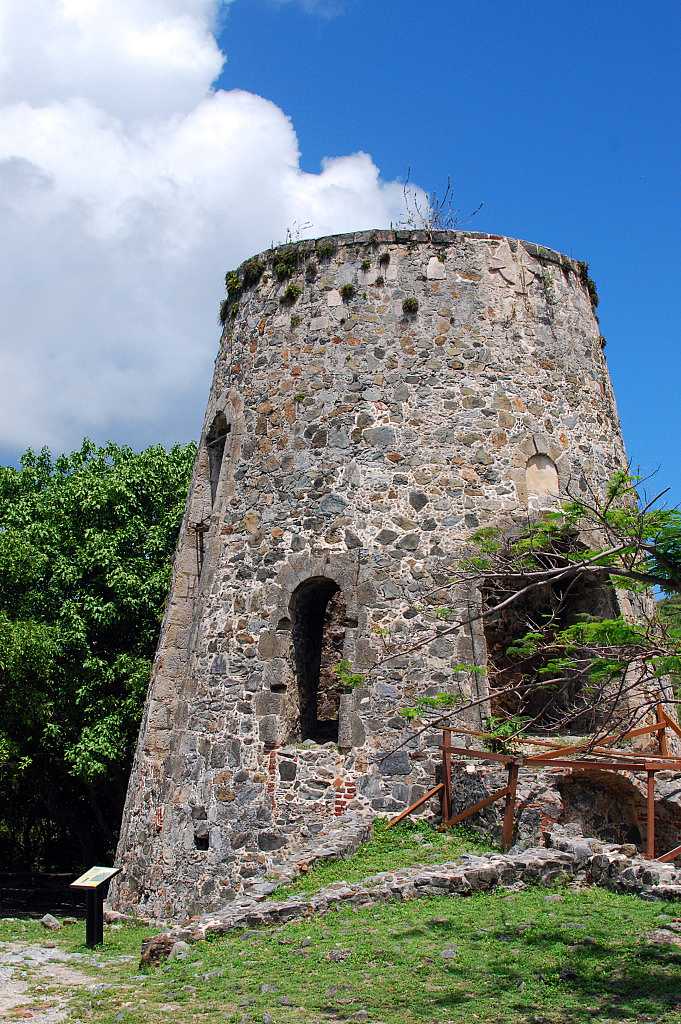
Sure St. John is known for its pristine beaches and incredibly romantic St. John villas like Mooncottage, but history is everywhere here and part of the romantic ambiance that keeps people coming back year after year. Every year over a million visitors come to St. John to enjoy a restful vacation, beach holiday, romantic honeymoon … you name it. But, why do they keep coming back year after year. History is a big part of the reason visitors keep coming back to St. John year after year. No place in the Caribbean is richer in romantic legend and history than St. John. Here’s just a brief synopsis.
The first human inhabitants of the Virgin Islands were the Arawak Indians. The Arawaks were descendants of coastal Indians from what is now Venezuela and Guyana who were forced out of that area by more aggressive tribes sometime around 300 AD. The Arawaks lived peacefully here, fishing and farming, until the fierce and cannibalistic Carib Indians moved into the area about 100 years before the arrival of Columbus.
Christopher Columbus “discovered” the Virgin Islands on his second voyage to the Caribbean in 1493. Because the islands were sited around the time of the feast of St. Ursula, he named them “Once Mil Virgins” after the eleven thousand virgins that were martyred with St. Ursula. Columbus was a devout Christian, and some say a religious zealot who was obsessed with the idea of converting what he thought was Asia to Christianity. But Columbus received wealth and status also.
It was under the Spanish colonists in Hispaniola that slavery began in the Caribbean. The indigenous people, both Carib and Arawak, were forced to work in Spanish mines and on farms. Conditions for them were so bad that most died of malnutrition and disease and others escaped the Spanish for temporary asylum in Cuba. In less than two decades, more than one million Indians had died or fled from the island of Hispaniola. By the time the Danes, British and French arrived in the Virgin Islands in the 17th century, the Indian populations had disappeared from there as well.
In 1585, five years after the end of his famous circumnavigation, Sir Francis Drake was in the Caribbean, once again in search of gold laden Spanish ships. Legend has it that he had a lookout from the island of St. Thomas (Drakes seat, where the view continues well to the east, into what is now the British Virgin Islands); and, that he organized his privateering flotilla in Coral Bay, St. John.
St. Thomas was settled in 1672 by agents of the Danish West India and Guinea company, but Denmark did not officially take possession of the Virgin Islands until 1754. The Danish estates on St. Thomas and St. John were planted with sugar cane, tobacco, and cotton – all very work intensive crops that would not have made a profit were it not for the labor of plantation slaves.
Slavery proliferated in the Virgin Islands until slaves out numbered Europeans on some islands by 5 to 1. Out of fear of rebellion, the Danes instituted a barbaric slave code that outlined the torture of disobedient or rebellious slaves. In September of 1733, after a summer of drought, an insect plague, two hurricanes, and the adoption of a severe and inhumane slave code, the slaves on St. John rebelled and took control of the island for six months until French troops arrived from Martinique to put down the rebellion. Rather than being captured, which would have meant death by torture, many of the rebels committed suicide at Ram’s Head. According to legend, 300 slaves jumped to their deaths from the cliffs. acknowledgement: http://www.wiol.com
Nothing is EVERY boring on romantic St. John, because history keeps reminding us how long this paradise has been in existence. And, visiting St. John now gives us a birds-eye view everything St. John has to offer and more. Enjoy!